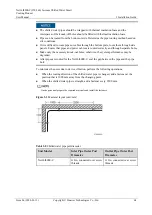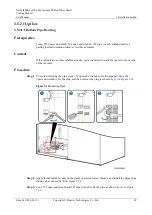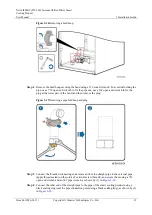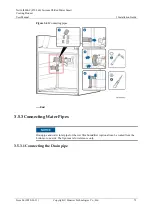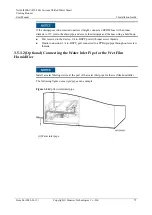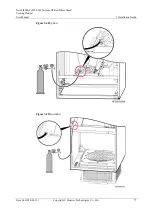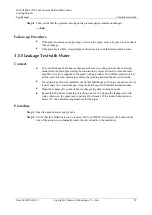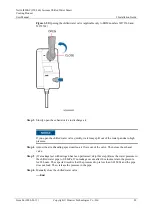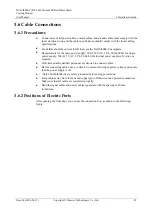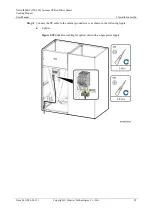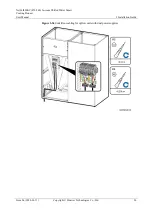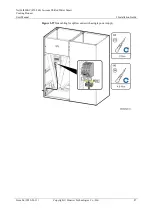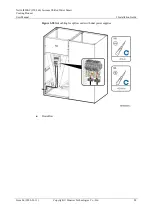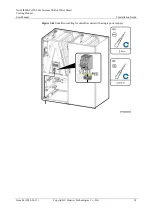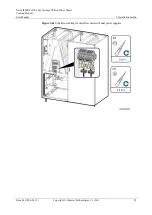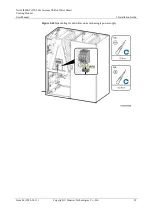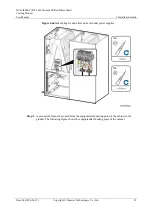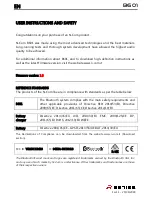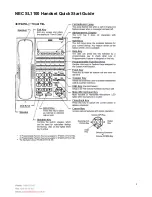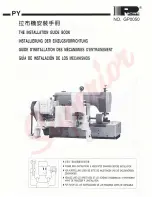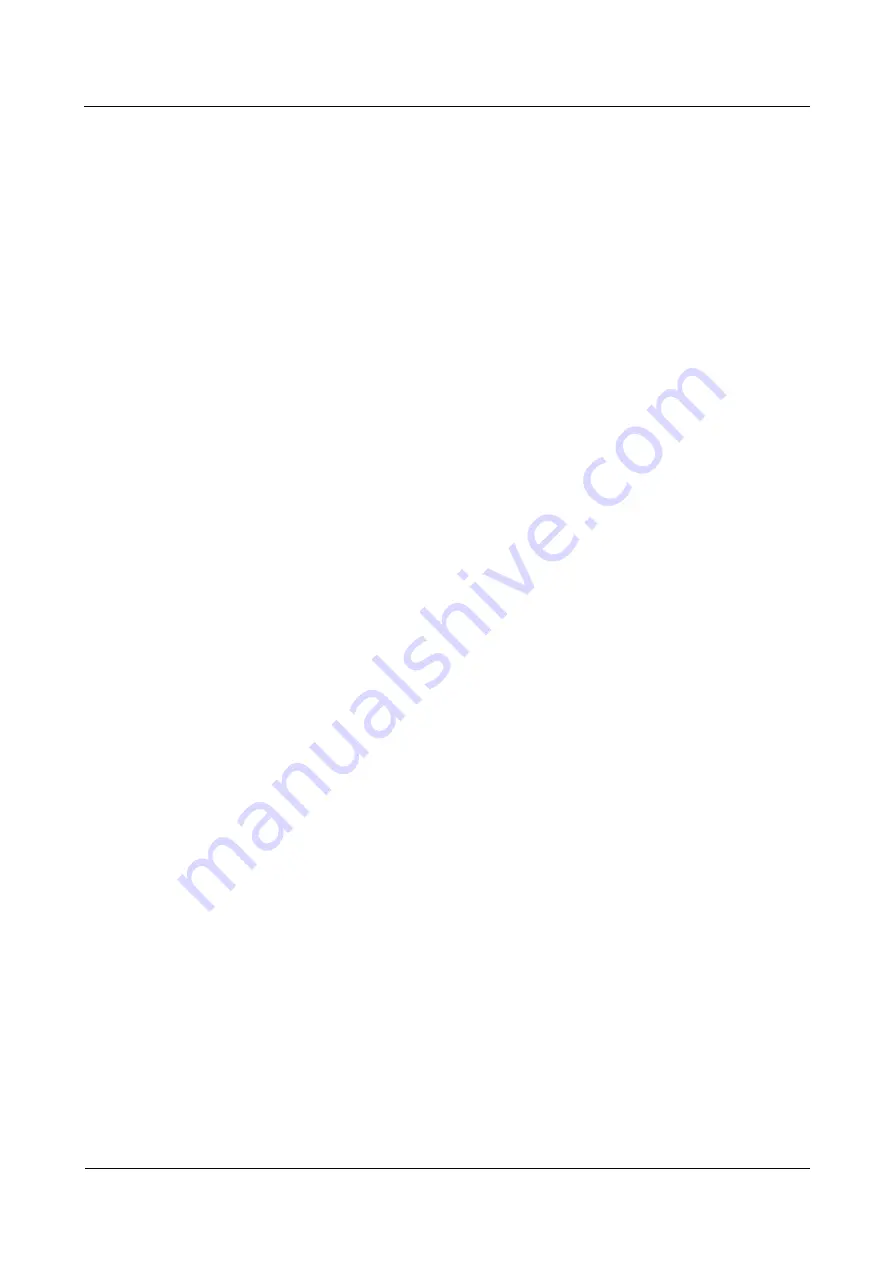
NetCol8000-C(070-260) In-room Chilled Water Smart
Cooling Product
User Manual
3 Installation Guide
Issue 06 (2020-01-13)
Copyright © Huawei Technologies Co., Ltd.
78
Step 4
Then, check that the pressure reading on the pressure gauge remains unchanged.
----End
Follow-up Procedure
If the pressure decreases, apply soapy water on the pipes, especially pipe joints to check
for any leakage.
If the pressure is stable, wrap all pipes and connectors with thermal insulation foam.
3.5.5 Leakage Test with Water
Context
To avoid blockage of the heat exchanger in the smart cooling product due to foreign
matter from the main pipe during the construction, you are advised to clean the main
pipe before water is supplied to the smart cooling product. Turn off the isolation valves
on the water inlet and outlet pipes before the cleaning and turn them on afterwards.
If a cabinet has been disassembled, check that hold hoops on the pipe connectors do not
leak. If there is no water leakage, wrap the hold hoops with thermal insulation foam.
Open the exhaust valve of each heat exchanger to exhaust nitrogen onsite.
Ensure that the indoor temperature is always above 0°C during the leakage test with
water, otherwise, the pipes may experience frost cracks. If the indoor temperature is
below 0°C, take anti-freezing measures for the pipes.
Procedure
Step 1
Open the general water supply valve.
Step 2
Verify that the chilled water valve is open (100% or OPEN). If not, press the button on the
side of the actuator, and manually rotate the valve handle to the maximum.

